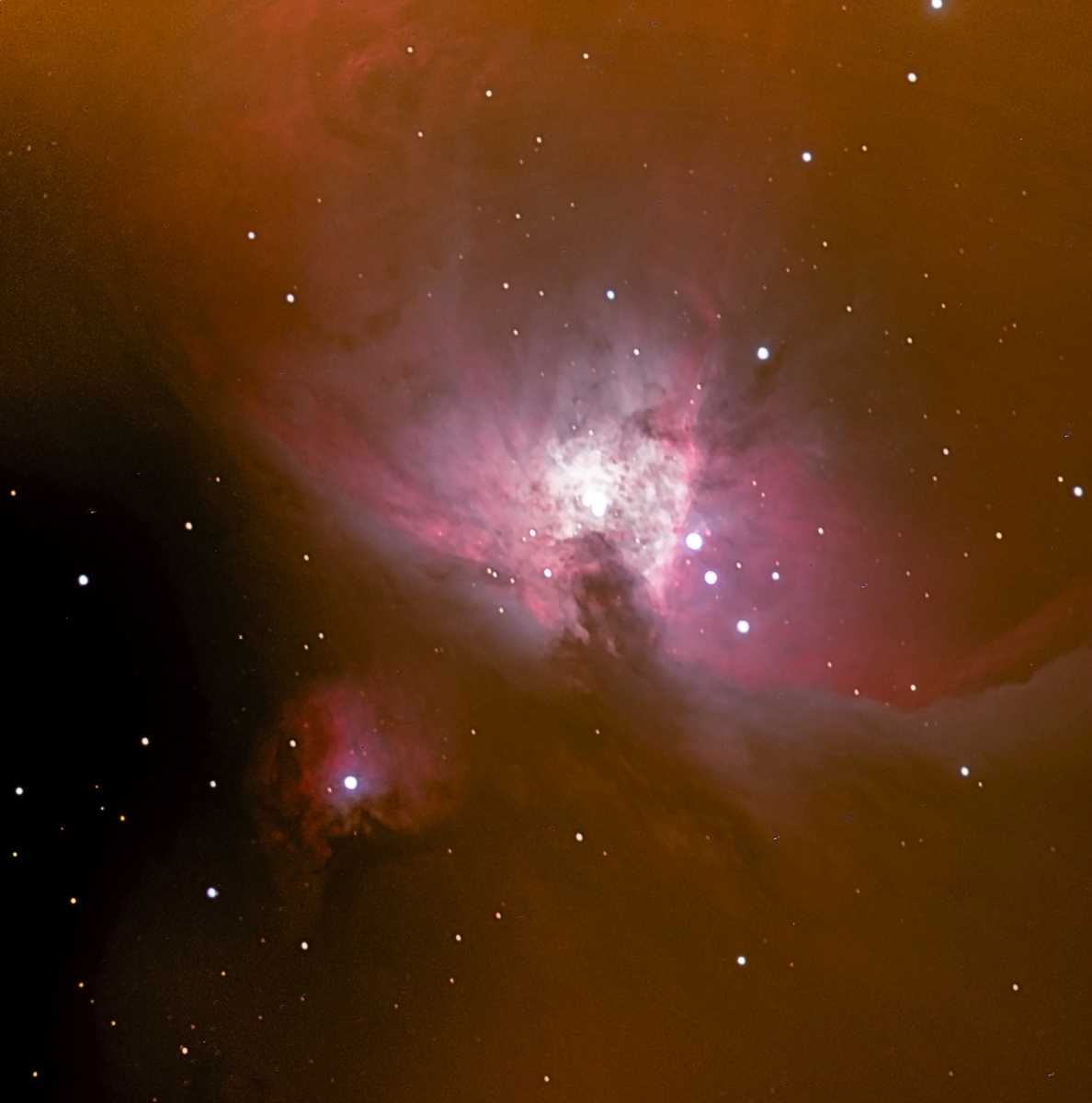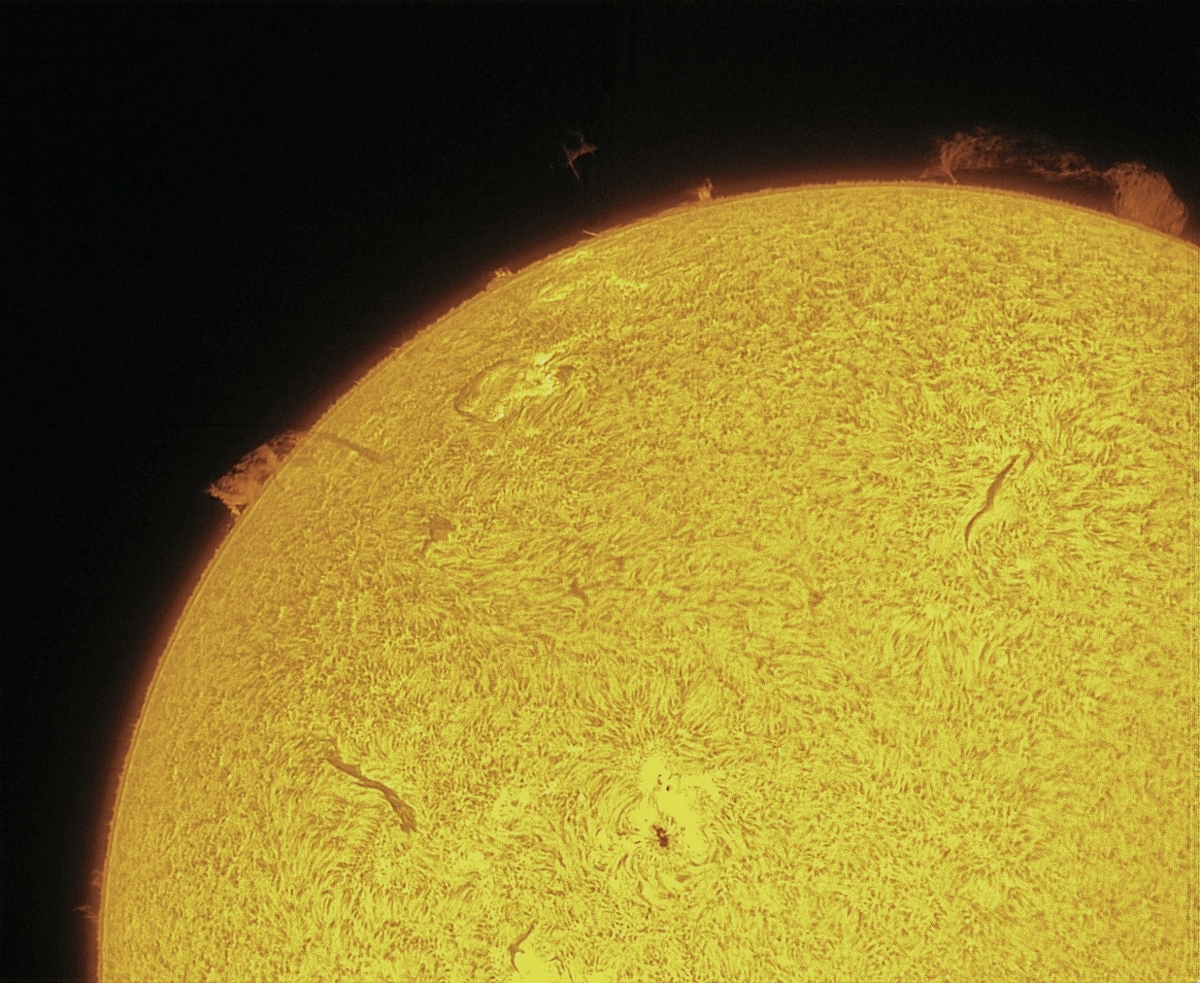QMUL Astronomical Observatory undergoes significant upgrade
The QMUL Astronomical Observatory is undergoing a major upgrade to allow full remote operation of the dome and telescopes. This will greatly expand the range of projects that students will be able to carry out as part of their final-year projects.
Published:

M42 - the Orion Nebula (a region of active high mass star formation) in Orion, as captured by the QMUL Astronomical Observatory.
The Department of Physics & Astronomy is investing in a significant upgrade of the astronomical observatory that is located on the roof of the building. The department has a long history of hosting an observatory for the purpose of teaching its UG students, and the last significant upgrade was completed in 2011-12 during a major refurbishment of the Physics & Astronomy building.
The observatory currently hosts a motorised dome and an array of three telescopes: a Celestron C14 reflector, a Star Wave ED 110 refractor, and a Lunt 80mm solar telescope. These are equipped with state-of-the-art CCD cameras, and are all located on a heavy-duty computer-driven mount that enables efficient and accurate pointing and tracking during observations. The current set-up enables the capture of images such as those shown on this page, as well as data used for student project work. Further images and information may be viewed here: https://www.qmul.ac.uk/spcs/astro/teaching/astronomical-observatory/
The ongoing upgrade involves complete automation of the observatory so that it can be operated remotely. This will dramatically increase the amount of observing time available to students, and will allow for a a wider range of projects to be offered as students undertake their final-year research projects. Completion of the upgrade is scheduled for October 2022.
 Prof. Steve Thomas says “We have acquired most of the hardware needed to remotely operate the dome. Once the system is fully installed, we will be carrying out various remote operational tests, including imaging, before finally making the system accessible online."
Prof. Steve Thomas says “We have acquired most of the hardware needed to remotely operate the dome. Once the system is fully installed, we will be carrying out various remote operational tests, including imaging, before finally making the system accessible online."
Prof. Richard Nelson says “During the last 10 years we’ve used the observatory to give in-depth training to numerous undergraduate students in the same observational techniques that are used by professional astronomers world-wide, and even more students have used the observatory to undertake additional project work as part of their taught modules. Completion of the upgrade will allow us to offer this training and experience to a significantly larger number students, who hopefully will be inspired to go on to become professional astronomers themselves.”
The observatory currently hosts a motorised dome and an array of three telescopes: a Celestron C14 reflector, a Star Wave ED 110 refractor, and a Lunt 80mm solar telescope. These are equipped with state-of-the-art CCD cameras, and are all located on a heavy-duty computer-driven mount that enables efficient and accurate pointing and tracking during observations. The current set-up enables the capture of images such as those shown on this page, as well as data used for student project work. Further images and information may be viewed here: https://www.qmul.ac.uk/spcs/astro/teaching/astronomical-observatory/
The ongoing upgrade involves complete automation of the observatory so that it can be operated remotely. This will dramatically increase the amount of observing time available to students, and will allow for a a wider range of projects to be offered as students undertake their final-year research projects. Completion of the upgrade is scheduled for October 2022.
 Prof. Steve Thomas says “We have acquired most of the hardware needed to remotely operate the dome. Once the system is fully installed, we will be carrying out various remote operational tests, including imaging, before finally making the system accessible online."
Prof. Steve Thomas says “We have acquired most of the hardware needed to remotely operate the dome. Once the system is fully installed, we will be carrying out various remote operational tests, including imaging, before finally making the system accessible online."Prof. Richard Nelson says “During the last 10 years we’ve used the observatory to give in-depth training to numerous undergraduate students in the same observational techniques that are used by professional astronomers world-wide, and even more students have used the observatory to undertake additional project work as part of their taught modules. Completion of the upgrade will allow us to offer this training and experience to a significantly larger number students, who hopefully will be inspired to go on to become professional astronomers themselves.”